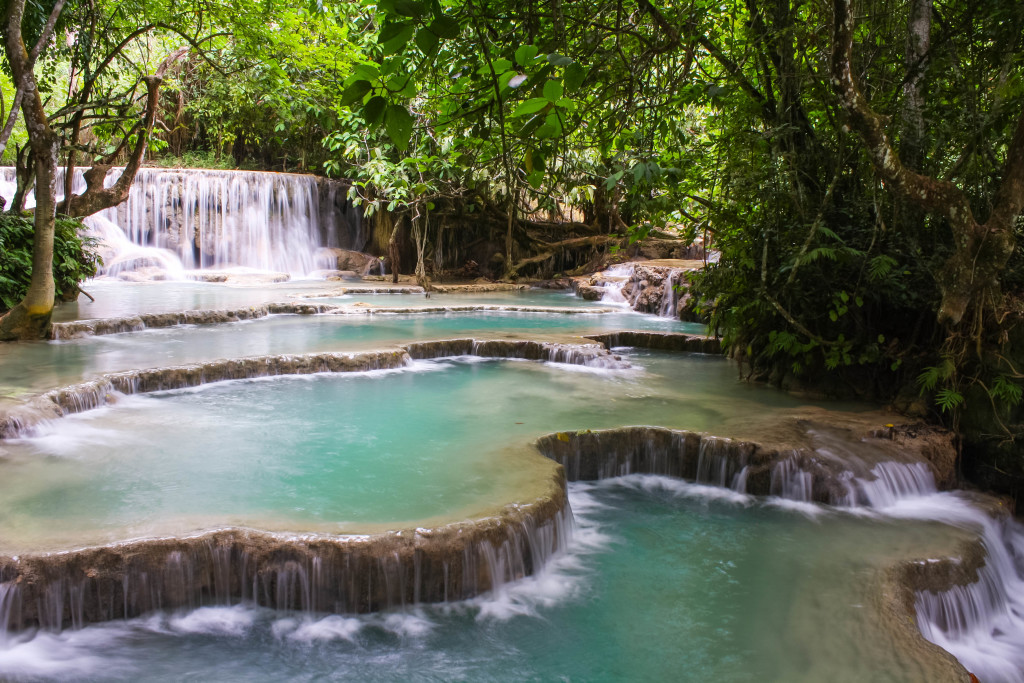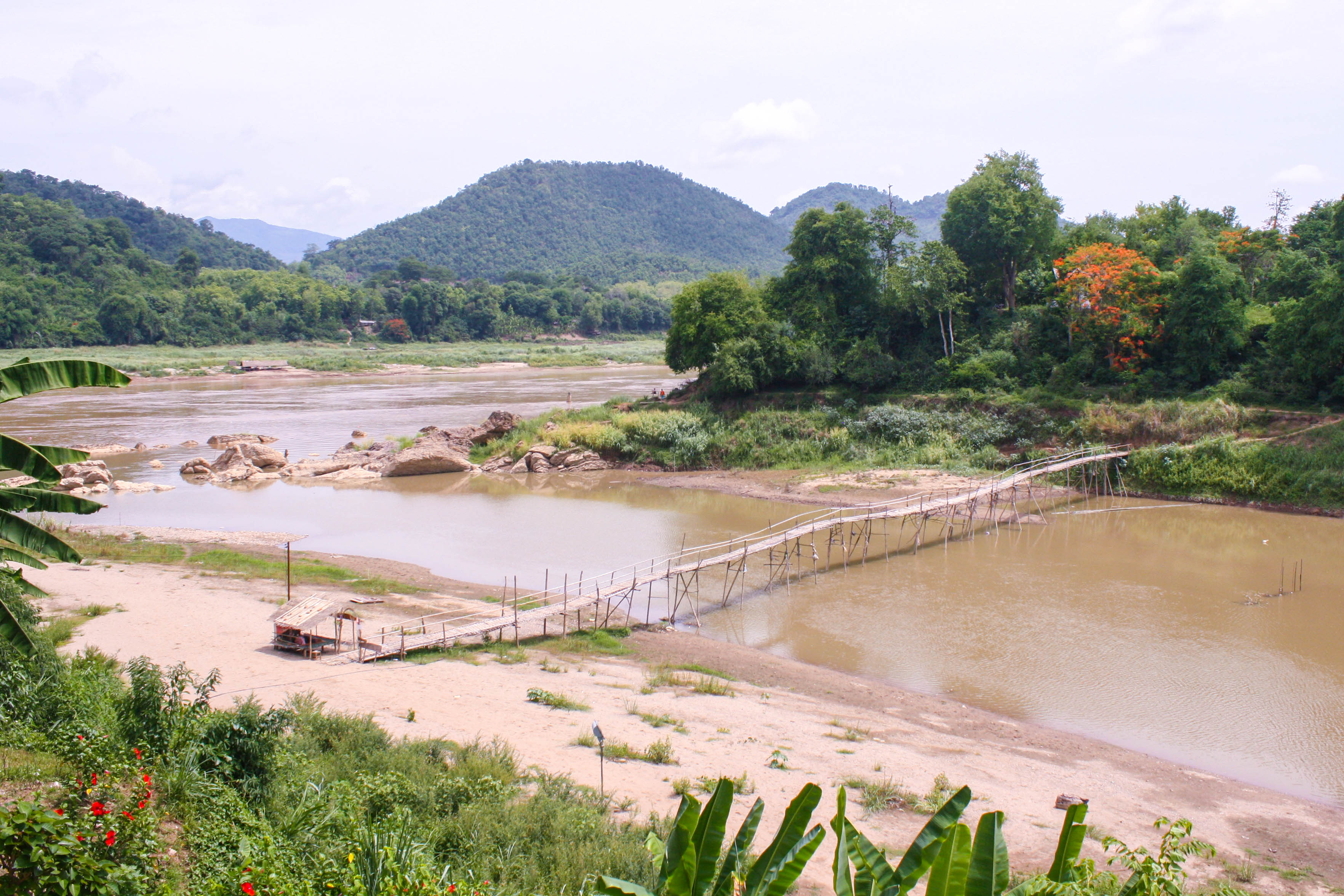After my recent trip through Myanmar, I backpacked across Laos. Much like Myanmar, Laos was closed to tourism and the West for decades, but has recently re-opened its doors. Unlike Myanmar, Laos is officially a communist state – one of only five remaining in the world, alongside Cuba, China, Vietnam, and (nominally) North Korea.
Luang Prabang
I flew into Luang Prabang, which has one of the very few international airports in Laos. Luang Prabang is a beautiful, historic town and UNESCO world heritage site, filled with ancient temples and markets. But best of all – and generally true of all of Laos – is the natural beauty of the surrounding countryside.
The Kuang Si waterfalls lie 40 minutes southwest of Luang Prabang. These travertine falls flow from mineral springs, depositing limestone along the way to form beautiful terraces and turquoise swimming pools.
The limestone deposited by the mineralized water forms curtains of calcium carbonate that give a surreal feel to the waterfalls, as though they were man-made for a Disney landscape.
Luang Prabang itself has plenty of natural beauty, lying at the confluence of the Mekong and Nam Khan rivers. Here, a small rickety bamboo bridge conveys foot traffic over the Nam Khan river near the historic center of Luang Prabang.
Following several days in and around Luang Prabang, I caught a bus to Vang Vieng.
Vang Vieng
Vang Vieng lies on the road between Laos’s two most important cities: Vientiane and Luang Prabang. The past decade saw it rise from a sleepy rural backwater into a notorious open air drug market with dozens of tourist deaths each year. After a government crackdown a couple of years ago, Vang Vieng has evolved into a sleepy, adventure-tourism oriented town.
Vang Vieng and its surrounding countryside are dominated by dramatic limestone karst landscapes.
Just northwest of Vang Vieng lies Tham Phu Kham cave, a set of enormous caverns and tunnels inside a limestone mountain. At the center, there is a small Buddhist altar.
The blue lagoon at the foot of the mountain is something of a miniature natural water park with rope swings, water slides, and tree branches to dive off of.
The road back to Vang Vieng from Tham Phu Kham and the blue lagoon passes through beautiful limestone mountains, farms, and tiny villages.
The sunset in Vang Vieng creates stark silhouettes of the surrounding mountains backlit by the last light of the evening.
Vientiane
From Vang Vieng I traveled south to Vientiane, the capital of Laos. This is surely the world’s sleepiest national capital. The center of the city is filled with historic temples and colonial French buildings. Vientiane sits on the banks of the Mekong river along the Thai border, producing some spectacular sunsets during the monsoon season.
Visiting Laos
Unlike much of Southeast Asia, Laos is not terribly rough around the edges. It’s a developing country, but its tourism sector is fairly well-developed. In particular, you’ll find boutique hotels and adventure tourism opportunities here unlike anywhere else in the region – and for cheap.
Flying is by far the easiest way to get in and out of the country, unless you are coming from Thailand, in which case the land border is pretty simple. Other land borders, such as with Myanmar, are inconsistently open due to regional instability. One can travel overland from Vietnam, but the bus from Hanoi to Luang Prabang takes over 30 hours and travels some very rough, winding roads.
One of my favorite things in Laos was traveling by bus from Luang Prabang to Vientiane, via Vang Vieng. The buses are pretty, ah, rickety and the road is often in terrible condition as it winds treacherously through jagged mountaintop jungle, but the expansive views of the countryside and villages along the way are well, well worth it.











2 replies on “Off the Beaten Path in Laos”
Sweet!
What have you done with regards to language in Laos? Learned yourself / suffered / people already speak English everywhere?
I wish I’d learned myself, but no. So a little suffering, but in the cities and towns that attract tourists, you can find someone who speaks a bit of English. It’s certainly not hard to communicate in comparison to a country like China, where very few people can speak any English outside the major cities.